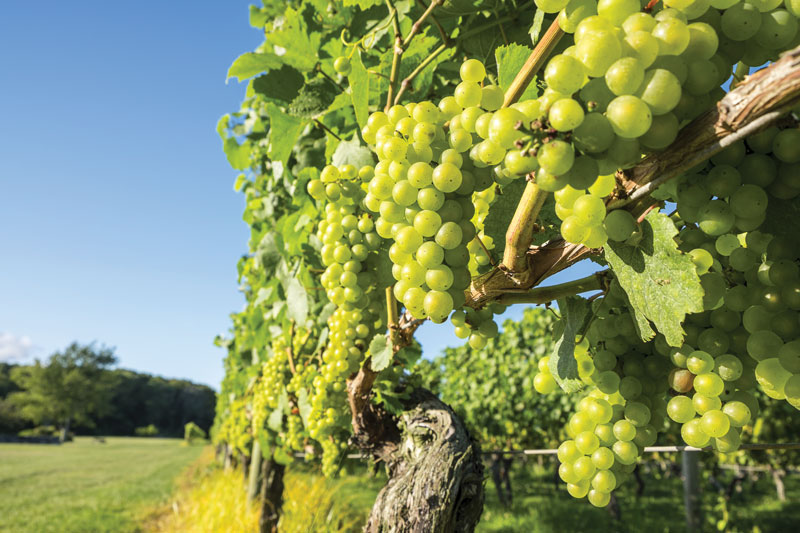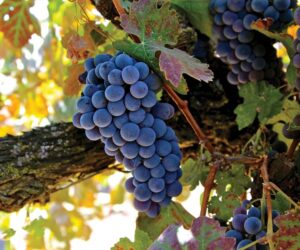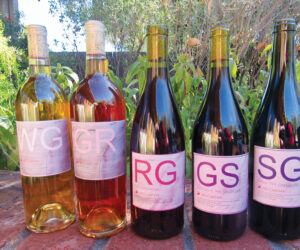Beaunois (pronounced Bon wah) is one of the world’s most popular wine grapes. Never heard of this grape varietal? That’s okay; you’re not alone. Beaunois is a synonym for this variety that has widespread plantings in France, Australia, South Africa, South America, and the United States. The variety is thought to have originated in France, and today’s DNA evidence supports that idea. But over the years there were many theories of how it came to exist, including the one that it was brought back to Central Europe by crusaders who found it in Lebanon and Syria in their travels. Having been around for so long, it is not surprising that there are many clones of it. When I first wrote about this grape varietal in my debut “Varietal Focus” column for WineMaker magazine, the Foundation Plant Services (FPS) at UC-Davis listed about 60 clones, and that is just for material that they had cleaned up and certified to be virus free. Today, a quick check of their website now lists over 80! But there are so many more than that. So, if it is such a popular grape, how come no one has heard of it? Well, I can guarantee that you have heard of its common name, because the variety I am calling Beaunois is actually Chardonnay.

So why do we have the name Beaunois? In Chardonnay’s historical area of cultivation, the earliest references to this grape variety were way back in 1583. The name Beaunois literally translates to “from Beaune,” a town in east central France between Dijon and Lyon, set amongst the vineyards of Burgundy. But this name can come with some confusion as the term can actually refer to any of the other varieties of that region as well, notably Aligoté and Pinot Blanc. The first writings referring to the name in its more common and current form did not come about until about one hundred years later. And through the ensuing years it has received a few different spellings like Chardenet, Chardonnet, and Chardenay. In fact, it was not until the 20th century, that Chardonnay became the de facto spelling of this varietal.
That is not the only confusion surrounding the variety, over the years it was confused with Pinot Blanc because they are morphologically similar. It was called Chardonnet Pinot Blanc or Pinot Blanc Chardonnet in France, and Clevner (Clävner) or Ruländer in Germany, which is the current name for Pinot Gris. But the DNA evidence has helped explain that Chardonnay is a natural cross of Pinot Noir and Gouais Blanc and its siblings are Gamay Noir, Melon, and Aligoté, to name a few. All of these varieties originated from the same region of France, which refutes the theory of originating from Lebanon and Syria. It is possible that a grape in Lebanon by the name of Obaideh could be a distant ancestor, but Chardonnay’s parents have never been cultivated there. It has been used as a parent in other breeding programs, producing offspring with relatively obscure names. In the United States it was bred at the Geneva, New York research center, Cornell-Geneva Grapevine Breeding and Genetics Program, with Seyval Blanc to produce the cold-hardy and highly-regarded Chardonel variety.
Not always a white grape, there are mutations that have resulted in a new variety called Chardonnay Rosé that is found in the vineyards around the village of Chardonnay in Burgundy. There is also a Chardonnay Musqué mutation that is characterized by grapey Muscat-like aromas in Pouilly and Arbois. Clones 77 and 809 are reported to have similar qualities to the Musqué variety.
While the variety adapts well to all climates, the better quality grapes come from cooler-climate regions.
In France, you will find Chardonnay in the white wines of Burgundy. It is the predominant grape in the Chablis and Côtes de Beaune sub-regions, but as you move south through Burgundy it tends to be blended into more value-priced wines with the Aligoté and Pinot Blanc grapes. Outside of Burgundy, it is one of the three main varieties in the Champagne region. This grape accounts for about 60% of the total area planted in the Burgundy and Champagne regions. It is also planted in the Loire and other regions and the regional winemaking rules regarding its use vary. The Languedoc was the first region to begin marketing Chardonnay wines as a specific varietal, which was a move away from the traditional French Appellation d’Origine Contrôlée (AOC) dominated rules on growing and blending wines by region.
Beyond France, Chardonnay is planted throughout the world and is generally marketed as a single variety. While the variety adapts well to all climates, the better quality grapes come from cooler-climate regions. Cooler climate grapes tend to be higher in acid and warmer regions lower acid. Given the extent of plantings around the world, you will also find a wide range of soil types and rootstocks in use. In California, largely due to a planting boom in the late 1990s, it is the single most planted white wine grape. In 2020, there were still over 90,000 acres planted in the state. Monterey and Sonoma counties have the most plantings, about 35,000 acres combined, followed by the Central Valley with about 12,000 acres, considerably down in acreage since I last wrote about it eleven years ago. There were 540 million tons crushed in California in 2020 and you will find it interesting to note that the warmer Central Valley counties of San Joaquin, Fresno, and Tulare account for almost half of the total tonnage produced in California. Most of these grapes wind up at large production facilities, being supplemented by small amounts from Sonoma and Monterey.
It is not that surprising at all to find the many different styles of Chardonnay that have been crafted. One of my favorites is Champagne. I like the effervescent style that is 100% Chardonnay, or blanc de blancs. It can also be blended with Pinot Noir and Pinot Meunier in various styles. The dry white styles vary by country and region produced.
In warmer regions, the fruit generally has higher Brix and higher alcohol and is treated with massive amounts of oak and allowed to develop buttery, malolactic fermentation (MLF) byproducts (diacetyl). This wine style has proven to be very popular; supply and demand stipulates that if it were not successful, the wineries producing this style would not be making it.
Call me a rebel, but in my opinion, the best Chardonnay wines are from grapes grown in the cooler regions. These are wines with crisp acidity and pair best with foods. Why hide the delicate flavor profile of this grape with oak and butter. Good quality grapes when ripe present flavors of apple, pear, melon, and tropical fruits. In the wine, the resulting fermentation bouquet takes on citrus and cream overtones. Subtle uses of oak and, in some rare cases (for me at least), a partial malolactic fermentation. The benefit of the malolactic fermentation is that it can add some mouthfeel to a sometimes thin wine. In my opinion the disadvantage of the malolactic fermentation is that if allowed to go to completion the wine can be overpowered by the buttery, diacetyl characteristics as well as being a little flat in the mouth from a low titratable acidity.
Typical Brix levels at harvest are 23.5 to 25. Above this range typically leads to wines that are largely flat with no varietal character. The high Brix leads to higher alcohols and a total overwhelming of your taste buds. The pH is an important parameter to monitor as well, which rises as the fruit hangs on the vine longer leading to flatter, thinner wines. That said, while pH is important and should be noted, I prefer to pay more attention to the titratable acidity (TA) of the grapes and resulting juice. The pH is important in driving the chemical stability of the wine, but it is the TA that contributes to mouthfeel and enhances the natural flavors in the grape. Target your acid levels to be around 6 to 7 g/L. Remember that this is the sum total of the weak organic acids in the wine. I will supplement acid deficient juice with tartaric acid to 6–7 g/L if the acid in the grape is too low. For partial MLF, set a target for ~7 g/L, and if you will prevent the MLF, target for the lower number. Your goal here is to be in the range of 6 g/L in your finished wine — but don’t forget it is still about the taste. The TA number is just a target. The variability of rootstock, soil type, and region will affect the TA in the juice and even some good quality juice will require a supplement from time to time. Make sure you supplement at the juice stage. But don’t overdo it. I find that one of the biggest problems in home winemaking is making decisions about adding acid. A good home test kit goes a long way in making these crucial decisions.
A successful fermentation is done with happy yeast. I usually use Premier Cuvee. I have looked at some of the other yeasts, notably Lallemand’s QA23 and CY3079, and have found success. The latter two have higher nitrogen requirements so supplement well to keep them happy. I use about 25% more of the recommended dosage of Fermaid K with QA23 and CY3079. But in general I get most of everything I want in a Chardonnay fermentation with Premier Cuvee, providing the temperature during active fermentation stays down between 55–60 °F (13–16 °C). It’s also fun to use all three yeasts in separate batches and when fermentation is complete, taste for differences and then blend them to optimize each.
At this point, consider aging the wine sur lie, which means “on the lees.” Only consider this if the lees do not smell of rotten egg. If they do smell of rotten egg, then rack the wine to a clean container and dispose of the lees. When aging sur lie, stir the lees every two weeks until you are ready to begin clearing the wine for bottling. For highly acidic wines, consider inoculating for the MLF. Be ready with your sulfur dioxide to halt the MLF when you get the mouthfeel you are looking for. MLF bacteria are highly sensitive to sulfur dioxide, but you need to be sure to keep levels sufficiently high to keep them suppressed.
If you had to remove the wine from the lees, you can add mouthfeel with the subtle use of oak products or some of the specialty products from producers like Laffort or Lallemand. It is best not to treat the entire batch all at once given the variability of these products. Try experimenting with different products in small batches.
My general rule in winemaking is moderation. This is a very versatile grape and many styles are possible. The style I describe is a personal preference. I find it to be a bit of a compromise between California and Burgundy and I feel it offers another perspective into what this grape is capable of doing. While I have written on the variety in the past, and made countless batches of it over the years, I learned so much more about this while doing my research. So raise a glass of Chardonnay and toast to “Beaunois,” a grape steeped in history, which has found world fame through its diversity of styles.
Non-MLF Chardonnay Yield 5 gallons (19 L)
Ingredients
100 lbs. (45 kg) Chardonnay fruit or 6 gallons (23 L) juice
Distilled water
15% potassium metabisulfite (KMBS) solution (Weigh 15 grams of KMBS, dissolve into about 75 mL of distilled water. When completely dissolved, make up to 100 mL total with distilled water.)
5 g Premier Cuvee yeast (also known as EC-1118, Prise de Mousse)
5 g Diammonium phosphate (DAP)
5 g Fermaid K (or equivalent yeast nutrient)
Equipment
5-gallon (19-L) carboy
6-gallon (23-L) plastic bucket
Inert gas (nitrogen, argon, or carbon dioxide will do)
Refrigerator (~45 °F/7 °C) to cold settle the juice. Remove the shelves so that the bucket will fit.
Ability to maintain a fermentation temperature of 55–60 °F (13–16 °C)
Thermometer – capable of measuring between 40–110 °F (4–43 °C)
Pipettes with the ability to add in increments of 1 mL
Tartaric acid – addition rate is based on acid testing results
Step by step
- Crush and press the grapes. Do not delay between crushing and pressing. Move the must directly to the press and press lightly to avoid extended contact with the skins and seeds.
- Transfer the juice to a 6-gallon (23-L) bucket. During the transfer, add 7 mL of 15% KMBS solution. (This addition is the equivalent of 50 ppm SO2.)
- Move the juice to a refrigerator.
- Test juice for acidity and pH.
- Let the juice settle at least overnight. Layer the headspace with inert gas and keep covered.
- When sufficiently settled, rack the juice off of the solids into the 5-gallon (19-L) carboy.
- Suspend the Fermaid K in a little distilled water (usually ~20 mL), and add it to the juice.
- If you need to adjust for acid, this is the time to mix in your tartaric acid.
- Prepare yeast. Heat about 50 mL distilled water to 104 °F (40°C). Do not exceed this temperature as you will kill the yeast. If you overshoot the temperature, start over, or add some cooler water to get the temperature just right. The end result is you want 50 mL of water at 104 °F (40 °C). Sprinkle the yeast on the surface and gently mix so that no clumps exist. Let sit for 15 minutes undisturbed. Measure the temperature of the yeast suspension, then measure the temperature of the juice. You do not want to add the yeast to your cool juice if the temperature difference exceeds 15 °F (8 °C). Acclimate your yeast by taking about 10 mL of the cold juice and adding it to the yeast suspension. Wait 15 minutes and measure the temperature again. Do this until you are within the specified temperature range.
- When the yeast is ready, add it to the carboy and move the carboy to an area where the ambient temperature is 55–60 °F (13–16 °C).
- You should see signs of fermentation within about two to three days. This will appear as some foaming on the surface and the airlock will have bubbles moving through it. If the fermentation has not started by day four, you might consider warming the juice to 60–65 °F (16–18 °C) temporarily to stimulate the yeast. Once the fermentation starts, move back to the lower temperature. If that does not work, consider re-pitching the yeast as described above.
- Mix up the DAP in about 50 mL of previously boiled water. This addition is typically done at 1⁄3 sugar depletion. However, since we are going on visual cues to avoid entering the carboy, then 36–48 hours after noticeable fermentation (assuming a 22–25 °Brix initially, 36 hours for the low end and 48 hours for the high end).
- Normally you would monitor the progress of the fermentation by measuring Brix. One of the biggest problems with making white wine at home is maintaining a clean fermentation. Entering the carboy to measure the sugar is a prime way to infect the fermentation with undesirable microbes. So at this point, the presence of noticeable fermentation is good enough. Leave well enough alone for about two weeks.
- Assuming the fermentation has progressed, then after about two weeks, it is time to start measuring the sugar. Sanitize your thief; remove just enough liquid for your hydrometer. Record your results. If the Brix is greater than 7 °B, then wait another week before measuring. If the Brix is less than 7 °B, begin measuring every other day. Continue to measure the Brix every other day until you have two readings in a row that are negative and about the same.
- Taste the wine. If the wine tastes dry add 8 mL of KMBS (40 ppm SO2) and lower the temperature to about 40 °F (4 °C). The refrigerator works best for this. If there are any sulfide-like (rotten egg) odors, rack the wine off the lees. If the wine smells good, then let the lees settle for about two weeks and stir them up. Repeat this step every two weeks for eight weeks total. This will be a total of five stirs.
- After the second stir, check the SO2 and adjust to 30–35 ppm free SO2.
- After eight weeks, let the lees settle. At this point, the wine is going to be crystal clear or a little cloudy. If the wine is crystal clear, then that is great! If the wine is cloudy, then presumably, if you have kept up with the SO2 additions and adjustments, temperature control, kept a sanitary environment, and there are no visible signs of a re-fermentation, then this is most likely a protein haze and you have two options: Do nothing – it is just aesthetics. Or, clarify with bentonite.
- While aging, test for SO2 and keep maintained at 30–35 ppm.
- Once the wine is cleared, it is time to move it to the bottle. This would be about 6 months after the onset of fermentation. Keep in mind this wine has had the MLF inhibited. If all has gone well to this point, given the quantity made, it can probably be bottled without filtration. Your losses during filtration could be significant. That said, maintain sanitary conditions while bottling, and you should have a fine example of a clean, crisp Chardonnay that pairs well with lemon based chicken or seafood dishes. ENJOY!






